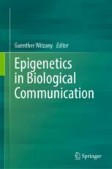Search
Search Results
-
A CRISPR toolbox for generating intersectional genetic mouse models for functional, molecular, and anatomical circuit map**
BackgroundThe functional understanding of genetic interaction networks and cellular mechanisms governing health and disease requires the dissection,...

-
Genome-wide screening for genetic variants in polyadenylation signal (PAS) sites in mouse selection lines for fatness and leanness
Alternative polyadenylation (APA) determines mRNA stability, localisation, translation and protein function. Several diseases, including obesity,...

-
Regulation of Potassium and Chloride Concentrations in Nervous Tissue as a Method of Anticonvulsant Therapy
AbstractUnder some pathological conditions, such as pharmacoresistant epilepsy, status epilepticus or certain forms of genetic abnormalities, spiking...

-
Alzheimer’s disease rewires gene coexpression networks coupling different brain regions
Connectome studies have shown how Alzheimer’s disease (AD) disrupts functional and structural connectivity among brain regions. But the molecular...

-
A distinct astrocyte subtype in the aging mouse brain characterized by impaired protein homeostasis
The aging brain exhibits a region-specific reduction in synapse number and plasticity. Although astrocytes play central roles in regulating synapses,...

-
A conserved transcriptional fingerprint of multi-neurotransmitter neurons necessary for social behavior
BackgroundAn essential determinant of a neuron’s functionality is its neurotransmitter phenotype. We previously identified a defined subpopulation of...

-
RNA-Mediated Inheritance of Mammalian Spermatozoa
RNA and DNA carry memories to transmit information to future generations. If the role of DNA, with its laws of genetics, is that of a recognized and...
-
Architecture of the subthalamic nucleus
The subthalamic nucleus (STN) is a major neuromodulation target for the alleviation of neurological and neuropsychiatric symptoms using deep brain...

-
The Role of the AgRP 25-51 Active Fragment in the Regulation of Functional Activity of Locus Coeruleus Norepinephrinergic Neurons and in Norepinephrine Biosynthesis
AbstractDouble fluorescence immunolabeling and confocal microscopy showed that the nerve processes immediately surrounding norepinephrinergic (NE)...

-
Mechanism and effects of pulsatile GABA secretion from cytosolic pools in the human beta cell
Pancreatic beta cells synthesize and secrete the neurotransmitter GABA (γ-aminobutyric acid) as a paracrine and autocrine signal to help regulate...

-
Whole-genome sequencing reveals the genetic mechanisms of domestication in classical inbred mice
BackgroundThe laboratory mouse was domesticated from the wild house mouse. Understanding the genetics underlying domestication in laboratory mice,...

-
Effects of Chronic Combined Treatment with Ketanserin and Fluoxetine in B6.CBA-D13Mit76C Recombinant Mice with Abnormal 5-HT1A Receptor Functional Activity
AbstractThe recombinant B6.CBA-D13Mit76C mouse strain is characterized by an altered sensitivity of 5-HT 1A receptors and upregulated 5-HT 1A gene...

-
Promoter profiling of Arabidopsis amino acid transporters: clues for improving crops
Key messageThe review describes the importance of amino acid transporters in plant growth, development, stress tolerance, and productivity. The...

-
GAB functions as a bioenergetic and signalling gatekeeper to control T cell inflammation
γ-Aminobutyrate (GAB), the biochemical form of (GABA) γ-aminobutyric acid, participates in sha** physiological processes, including the immune...

-
VGLUT3 neurons in median raphe control the efficacy of spatial memory retrieval via ETV4 regulation of VGLUT3 transcription
The raphe nucleus is critical for feeding, rewarding and memory. However, how the heterogenous raphe neurons are molecularly and structurally...
-
Adenosine to inosine RNA editing in animal cells
Major advances in the understanding of adenosine deaminases acting on RNA (ADARs) have come from the generation of ADAR mutant animals. In mice,...
-
The Janus face of endogenous neuronal tPA: promoting self-protection and worsening the death of neighboring neurons
Recombinant tissue-type plasminogen activator (r-tPA/Actilyse) stands as the prevailing pharmacological solution for treating ischemic stroke...

-
The Important Role of Systems Biology in Neuroscience and Neurology and Its Associated Diseases
Neurodegenerative diseases are a huge global health concern in the Western world due to our ageing population and other factors. Research into these...
-
Understanding translational research in schizophrenia: A novel insight into animal models
Schizophrenia affects millions of people worldwide and is a major challenge for the scientific community. Like most psychotic diseases, it is also...

-
A new perspective on the autophagic and non-autophagic functions of the GABARAP protein family: a potential therapeutic target for human diseases
Mammalian autophagy-related protein Atg8, including the LC3 subfamily and GABARAP subfamily. Atg8 proteins play a vital role in autophagy initiation,...

